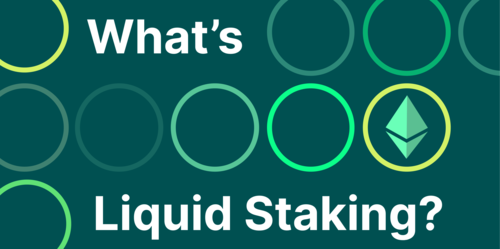
Stafi
FIS Price
How is the price of Stafi (FIS) calculated?
The price of Stafi (FIS) is calculated in real-time by aggregating the latest data across 22 exchanges and 26 markets, using a global volume-weighted average formula. Learn more about how crypto prices are calculated on CoinGecko.
Stafi Price Chart (FIS)
| 1h | 24h | 7d | 14d | 30d | 1y |
|---|---|---|---|---|---|
| 0.1% | 0.8% | 3.3% | 20.6% | 23.5% | 34.1% |
FIS Converter
|
Market Cap
Market Cap = Current Price x Circulating Supply
Refers to the total market value of a cryptocurrency’s circulating supply. It is similar to the stock market’s measurement of multiplying price per share by shares readily available in the market (not held & locked by insiders, governments) Read More |
$84,100,059 |
|---|---|
|
Market Cap / FDV
The proportion of current market capitalization compares to market capitalization when meeting max supply.
The closer the Mkt Cap/FDV to 1, the closer the current market capitalization to its fully diluted valuation and vice versa. Learn more about Mkt Cap/FDV here. |
1.0 |
|
Market Cap / TVL Ratio
Ratio of market capitalization over total value locked of this asset. A ratio of more than 1.0 refers to its market cap being greater than its total value locked.
MC/TVL is used to approximate a protocol’s market value vs. the amount in assets it has staked/locked. |
7.16 |
|
Fully Diluted Valuation
Fully Diluted Valuation (FDV) = Current Price x Total Supply
Fully Diluted Valuation (FDV) is the theoretical market capitalization of a coin if the entirety of its supply is in circulation, based on its current market price. The FDV value is theoretical as increasing the circulating supply of a coin may impact its market price. Also depending on the tokenomics, emission schedule or lock-up period of a coin's supply, it may take a significant time before its entire supply is released into circulation. Learn more about FDV here. |
$84,100,059 |
|
Fully Diluted Valuation / TVL Ratio
Ratio of fully diluted valuation (FDV) over total value locked (TVL) of this asset. A ratio of more than 1.0 means that the FDV is greater than its TVL.
FDV/TVL is used to approximate a protocol’s fully diluted market value vs. the amount in assets it has staked/locked. |
7.16 |
|
24 Hour Trading Vol
A measure of a cryptocurrency trading volume across all tracked platforms in the last 24 hours. This is tracked on a rolling 24-hour basis with no open/closing times.
Read More |
$3,197,154 |
|
Total Value Locked (TVL)
Capital deposited into the platform in the form of loan collateral or liquidity trading pool.
Data provided by Defi Llama |
$11,753,349 |
|
Circulating Supply
The amount of coins that are circulating in the market and are tradeable by the public. It is comparable to looking at shares readily available in the market (not held & locked by insiders, governments).
Read More |
141,617,221
https://info.stafi.io/home/dashboard
|
|
Total Supply
The amount of coins that have already been created, minus any coins that have been burned (removed from circulation). It is comparable to outstanding shares in the stock market.
Total Supply = Onchain supply - burned tokens |
141,617,221 |
|
Max Supply
The maximum number of coins coded to exist in the lifetime of the cryptocurrency. It is comparable to the maximum number of issuable shares in the stock market.
Max Supply = Theoretical maximum as coded |
141,617,221 |
FIS Historical Price
| 24h Range | $0.5679 – $0.5964 |
|---|---|
| 7d Range | $0.5461 – $0.6363 |
| All-Time High |
$4.70
87.3%
Mar 19, 2021 (about 3 years)
|
| All-Time Low |
$0.1766
237.0%
May 12, 2022 (almost 2 years)
|
How do you feel about FIS today?
What is StaFi (FIS)?
FIS is the governance token for the StaFi protocol. Other than that, FIS secures the StaFi ecosystem through staking. FIS is also used to cover transaction fees on the protocol and to mint rTokens.
What is StaFi Protocol?
StaFi, short for Staking Finance, is the first DeFi protocol that unlocks liquidity of staked assets. Users can stake their PoS (Proof-of-Stake) tokens and receive equivalent amounts of rTokens (reward tokens). Users can trade these rTokens on decentralized exchanges, on top of earning staking rewards.

What is Proof-of-Stake?
There are two consensus mechanisms, Proof-of-Work (PoW) and Proof-of-Stake (PoS).
Proof-of-Work is an algorithm that rewards the first person that solves a computational problem (i.e. mining) to achieve distributed consensus. Miners compete to solve challenging cryptographic puzzles to add the next block on the blockchain.
On the other hand, Proof-of-Stake is designed to address the massive energy consumption in PoW. The PoS consensus algorithm elects block validators to sign blocks based on the percentage of tokens staked.
Bitcoin has adopted PoW while projects such as Tezos, NEO, Cardano, and recently Ethereum 2.0 have adopted PoS.

How does StaFi Work?
StaFi is made up of three layers: the bottom, contract, and application layer.
The bottom layer is predominantly built with Substrate’s blockchain framework. The Substrate framework encompasses component technologies such as P2P networks, consensus algorithms, and staking functions.
The contract layer allows for the creation of staking contracts for various assets such as Tezos, Cosmos, and Polkadot. Like usual staking protocols, stakers of these tokens will be rewarded with incentives on staking. However, StaFi unlocks liquidity by minting an equivalent amount of rTokens associated with the tokens initially staked.
The third and last layer, the application layer, supports third-party StaFi-based APIs or customized APIs to create a decentralized bonded asset trading market for rTokens to circulate, transfer, and trade on the StaFi Protocol.
The StaFi protocol is decentralized and is connected to Polkadot as a parallel chain. In other words, StaFi shares Polkadot’s underlying consensus. Polkadot also ensures the main security and performance of the whole system.
What are rTokens?
rTokens (reward-tokens) empowers liquidity. For example, stakers of PoS tokens such as ADA and XTZ will receive rADA and rXTZ in a 1:1 ratio. Holders of rADA and rXTZ can then trade these rTokens, or lend these on other DeFi platforms.
Some use cases of rTokens include:
-
Staking rewards distribution - rToken holders receive the staking rewards 1:1 to the original token.
-
Trading - rTokens can be traded on StaFi and other exchange.
-
Lending - rTokens can be used as collateral on lending platforms to borrow ETH or USDT.
-
Derivatives - StaFi aims to allow rTokens to be used on derivatives protocols such as Opyn or Hegic. This will open up the options market for users to hedge against price fluctuations.
-
Insurance - StaFi will explore insurance services for rTokens original validators to insure against the slashing loss
-
Redemption of the Staking Token - only rToken holders can unlock the original token
How many rTokens are supported on StaFi?
StaFi currently supports two products, rETH and rFIS.
StaFi is planning to support more PoS tokens in its protocol, with rDOT, rKSM, rXTZ, and rATOM coming soon.
How to access these products?
For rETH, users would require a Metamask wallet as rETH is on the Ethereum blockchain.
For rFIS, users would need to install the Polkadotjs extension to stake FIS.
How to obtain FIS tokens?
You may purchase FIS from exchanges such as Uniswap and Huobi.
Where can you buy Stafi?
FIS tokens can be traded on centralized crypto exchanges. The most popular exchange to buy and trade Stafi is Binance, where the most active trading pair FIS/USDT has a trading volume of $1,527,384.15 in the last 24 hours. Other popular options include BingX and WhiteBIT.
What is the daily trading volume of Stafi (FIS)?
The trading volume of Stafi (FIS) is $3,197,153.58 in the last 24 hours, representing a -33.40% decrease from one day ago and signalling a recent fall in market activity.
What is the all-time high for Stafi (FIS)?
The highest price paid for Stafi (FIS) is BTC0.0002526, which was recorded on Mar 19, 2021 (about 3 years). Comparatively, the current price is -87.30% lower than the all-time high price.
What is the all-time low for Stafi (FIS)?
The lowest price paid for Stafi (FIS) is BTC0.056442, which was recorded on May 12, 2022 (almost 2 years). Comparatively, the current price is 237.00% higher than the all-time low price.
What is the market cap of Stafi (FIS)?
Market capitalization of Stafi (FIS) is BTC1,295.1580 and is ranked #528 on CoinGecko today. Market cap is measured by multiplying token price with the circulating supply of FIS tokens (140 Million tokens are tradable on the market today).
What is the fully diluted valuation of Stafi (FIS)?
The fully diluted valuation (FDV) of Stafi (FIS) is BTC1,295.1580. This is a statistical representation of the maximum market cap, assuming the maximum number of 140 Million FIS tokens are in circulation today. Depending on how the emission schedule of FIS tokens are designed, it might take multiple years before FDV is realized.
How does the price performance of Stafi compare against its peers?
With a price increase of 3.30% in the last 7 days, Stafi (FIS) is underperforming the global cryptocurrency market which is up 3.90%, while underperforming when compared to similar Ethereum Ecosystem cryptocurrencies which are up 12.70%.

Stafi Markets
| # | Exchange | Pair | Price | Spread | +2% Depth | -2% Depth | 24h Volume | Volume % | Last Updated | Trust Score | |
|---|---|---|---|---|---|---|---|---|---|---|---|
| 1 |
CEX
|
$0.59511747194906770000000000000000000000000 | 0.02% | $78,469 | $35,315 | $1,527,384 | 47.65% |
Recently
|
|||
| 2 |
CEX
|
$0.59581606335553130000000000000000000000000 | 0.03% | $72,527 | $16,619 | $96,968.00 | 3.03% |
Recently
|
|||
| 3 |
CEX
|
$0.5966993649443895000000000000000000000000 | 0.13% | $30,465 | $17,664 | $109,982 | 3.43% |
Recently
|
|||
| 4 |
CEX
|
$0.59581606335553130000000000000000000000000 | 0.25% | $66,450 | $21,863 | $46,860.00 | 1.47% |
Recently
|
|||
| 5 |
CEX
|
$0.59720018372646920000000000000000000000000000 | 0.04% | $3,769 | $4,218 | $112,793 | 3.52% |
Recently
|
|||
| 6 |
CEX
|
$0.5929441569817080000000000000000000000000000000000 | 0.25% | $16,488 | $13,931 | $31,068.00 | 0.97% |
Recently
|
|||
| 7 |
CEX
|
$0.5962162084618815000000000000000000000000 | 0.44% | $26,393 | $14,146 | $32,278.00 | 1.01% |
Recently
|
|||
| 8 |
CEX
|
$0.59531588197259340000000000000000000000000 | 0.72% | $40,863 | $16,644 | $118,060 | 3.69% |
Recently
|
|||
| 9 |
CEX
|
$0.593493853051217000 | 0.55% | $9,361 | $8,019 | $35,311.00 | 1.1% |
Recently
|
|||
| 10 |
CEX
|
$0.59601613590870640000000000000000000000000 | 0.3% | $2,476 | $2,429 | $390,358 | 12.21% |
Recently
|
|||






























 Or check it out in the app stores
Or check it out in the app stores



